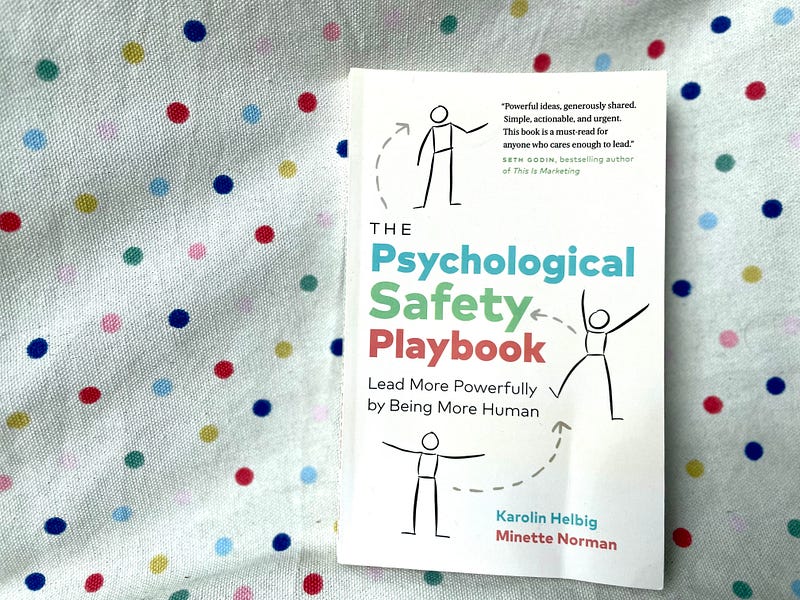Book Review: The Psychological Safety Playbook!
The teams that have a high degree of psychological safety are the highest performing teams. In a time when technology is rapidly evolving…

The teams that have a high degree of psychological safety are the highest performing teams. In a time when technology is rapidly evolving, and positions are uncertain, we have to remember that people do business with people. We need innovation more than ever. Innovative ideas come from people who are not afraid to speak up. Leaders are responsible for creating a safe environment where people can thrive. Create a high performing team by creating psychological safety first.
The Psychological Safety Playbook by Karolin Helbig and Minette Norman is an essential book for every leader. You will find a lot of useful ideas and advice about the process. I guarantee you that you will be flipping this book a lot, and it won’t collect dust on your bookshelf. If you are unsure about purchasing this book, here are my takeaways. I hope it will help you decide.
Communicate Courageously
The first chapter is about how to communicate courageously. You will find questions to ask, and the book describes scenarios of how to do it in a way that is the most helpful. There is a step-by-step guide on how to avoid groupthink and nurture continuous learning. Have you known that a good sense of humor has a great effect on the team? Laughing is the glue in every team because when we laugh, our brain releases endorphins, dopamine, and oxytocin, and laughing also helps reduce the stress hormone.
The Art of Listening
The second chapter will help you become a master of listening. It is not an easy task because sometimes we tend to confuse understanding with agreeing, and we confuse agreeing with liking. Even though it’s not easy, it is a must-have skill if you are eager to create psychological safety in your team. Good listening is not about not talking. It is more about asking further questions and being curious about others’ perspectives. Curiosity is the antidote to anxiety, and it fuels learning and connection.
Manage Your Reactions
In the third chapter, you will find exercises on how to manage your defensive reactions. Great ideas on how to establish a culture of respect and honesty instead of creating a culture of silence. Here are the best ones from the book: Try your best to stay connected with others. Say “Yes, and” acknowledge that your story may not be the truth, embrace and reframe risk and failure.
Embrace Failure
The fourth chapter is all about embracing risk and failure. Failure is a necessary by-product of innovation. Innovation means venturing into the unknown, which can bring up unpleasant emotions. To create psychological safety in the workplace, we must let go of our natural tendency to avoid and run away from difficult emotions. The book is filled with a lot of good tips and excellent practices.
Design Rituals
The last chapter is about designing inclusive rituals. Ensure everyone at the workplace feel valued, seen, heard, and accepted for who they are as an individual. In the end, you will have all the knowledge on how to respect all voices in your team.
Creating and sustaining a psychological safety workplace is a continuous journey. Teams evolve, and people come and go. This is why this book is great. It’s a playbook, so you have to reread time to time.
Thanks for reading!



